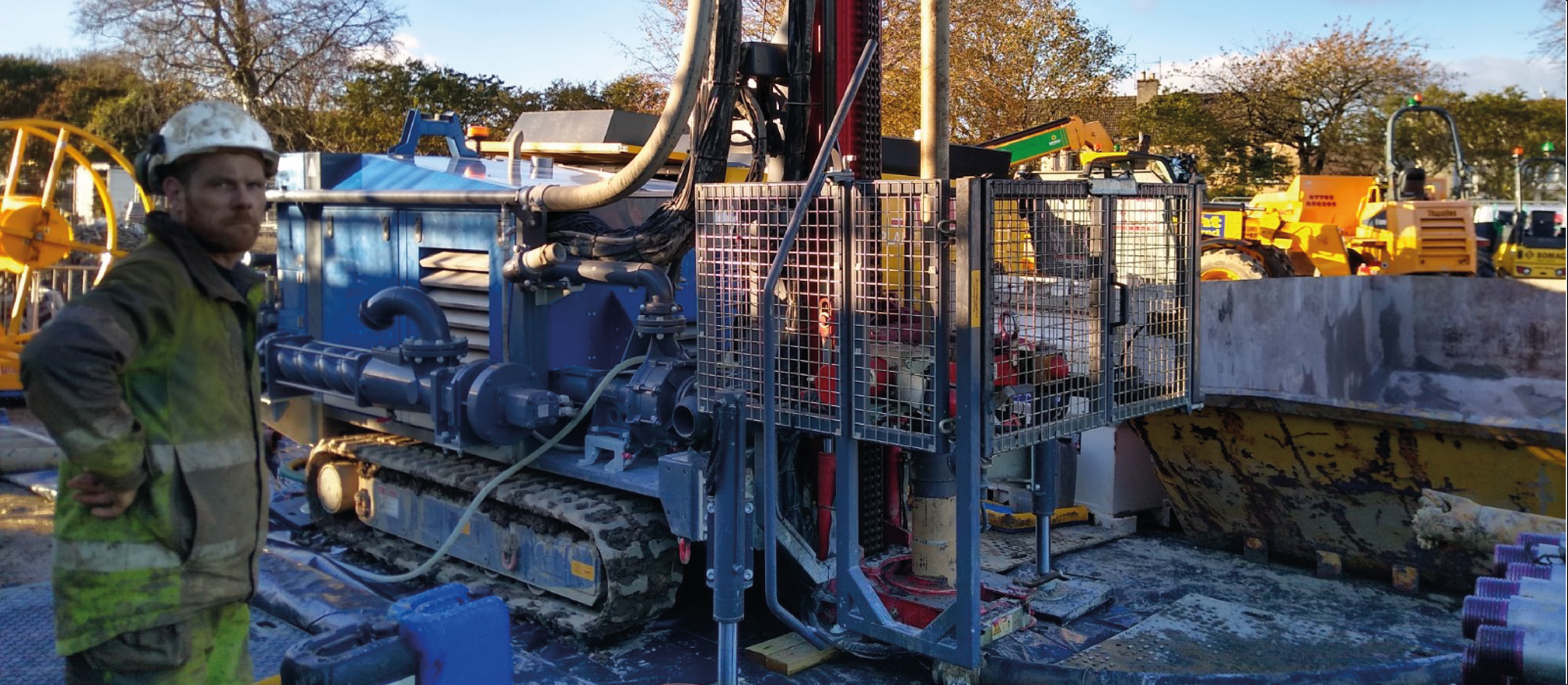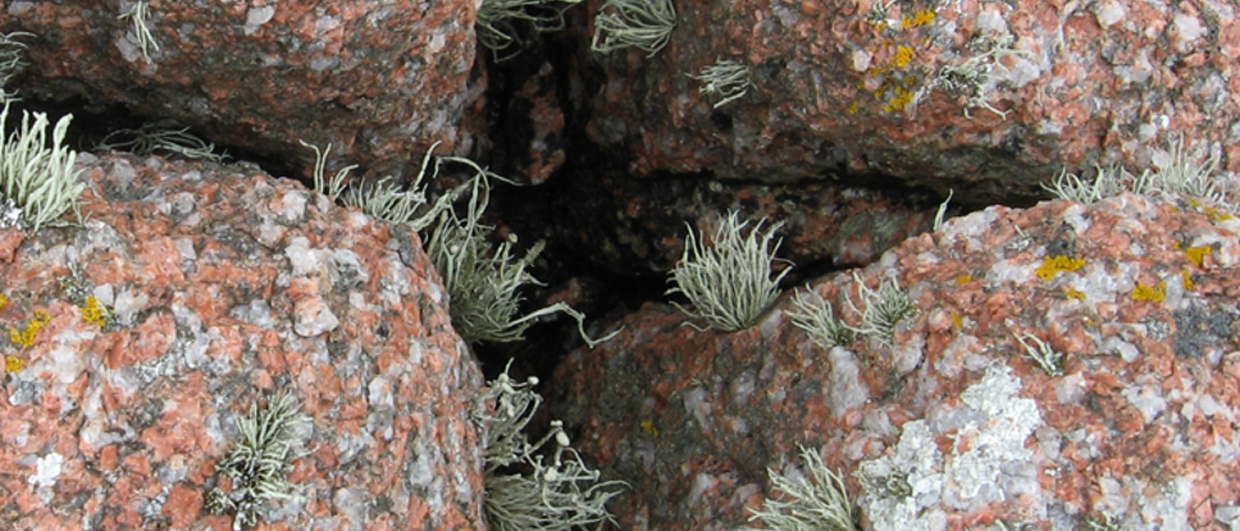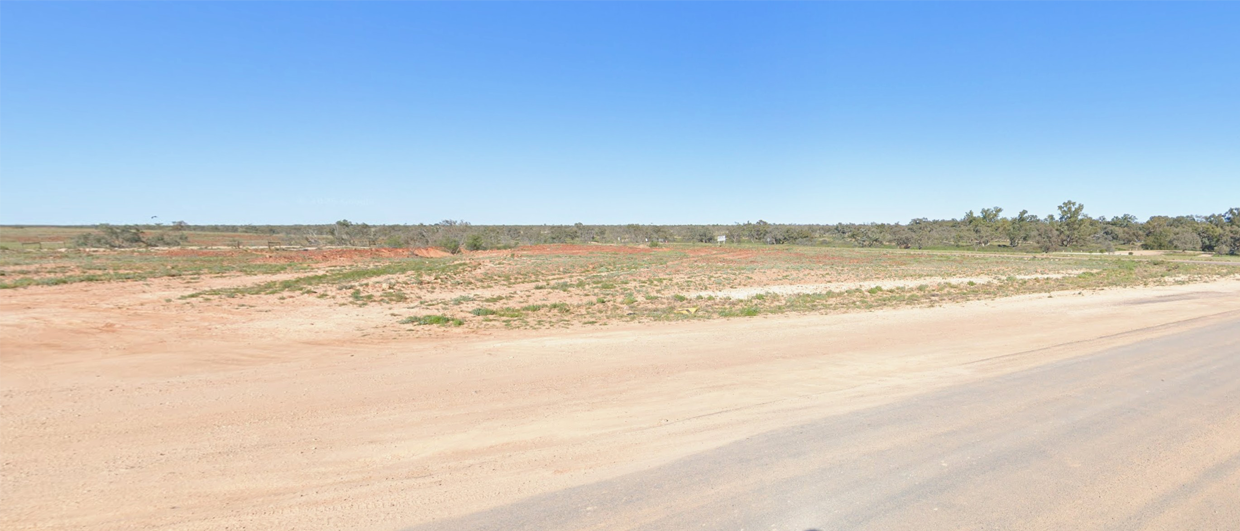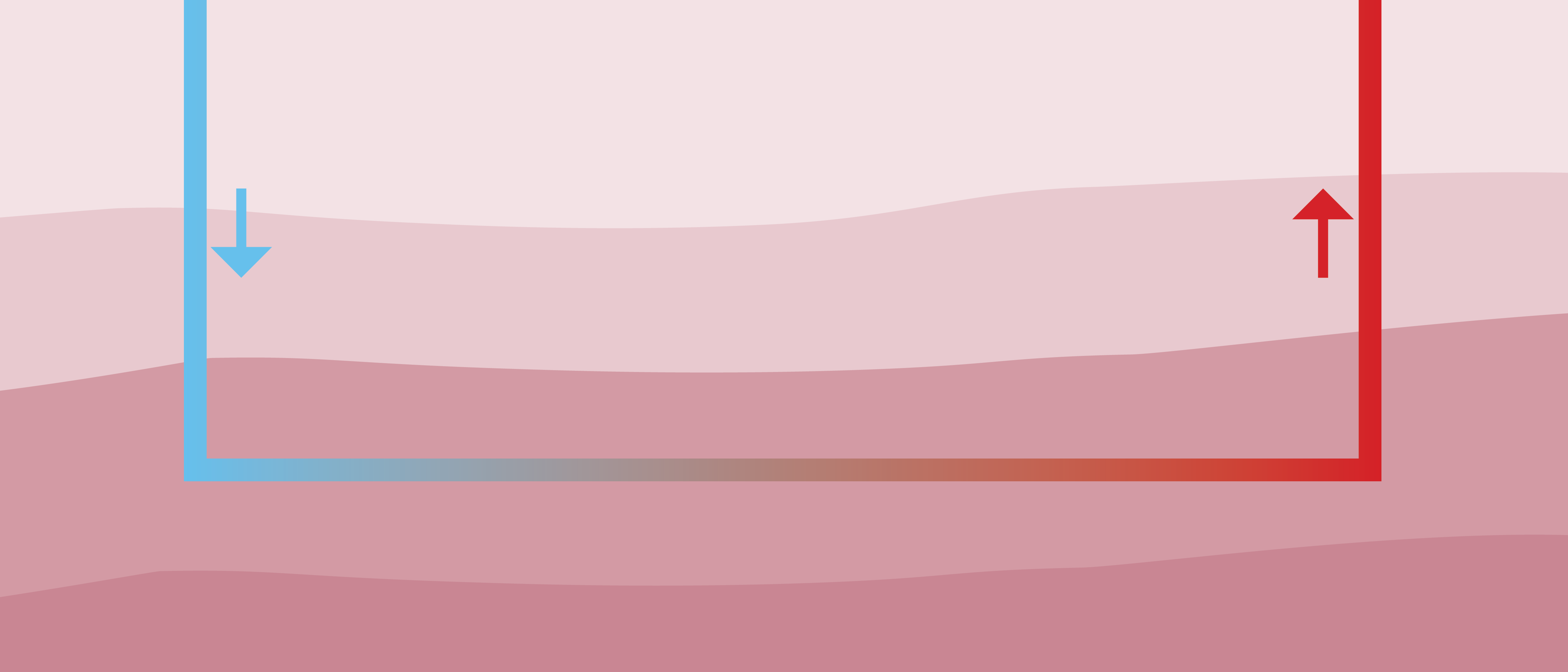“We’re operating five rigs continuously across the UK,” Ashley Lowthian from GreenGlove Boreholes tells me when I visit him and his colleague at a drill site in Garthdee, Aberdeen. Ashley is responsible for drilling 24 boreholes to a depth of around 120 m into the Aberdeen granite, with the aim to provide a new housing development with energy from the subsurface. His previous drilling job was in London: “We are all over the place,” he says, “and continuously expanding.”
“We drill a hole in about a day,” Ashley further explains, “so it is an entirely different ballgame than drilling deep geothermal wells.” Many of the processes involved in drilling these shallow boreholes are the same as drilling deeper wells though, but now it is happening in a miniature format. For example, a casing is used for the top 5 m to stabilise the hole; the rest is drilled open hole either with air or water. Cuttings are being collected in a skip standing next to the drilling equipment.
Once the drill bit arrives at the desired depth, circulation continues to a point where the hole is as clean as possible. Then, three tubes are lowered into it. “Why three tubes?” one would ask. Two tubes are coupled through a U-shaped connector (see image). These will be used to circulate the water through. The third tube, with an open end at the bottom of the borehole, will be used to pump geothermally conductive grout into the hole.

Once the borehole is filled with grout, the subsurface element of the project is completed. The next step is to connect the pipes to a heat pump that will be used to elevate the circulated fluid to the temperature required for underfloor heating.
“It is important to be aware that our solution is part of a process whereby the subsurface plays a role in a chain of other project requirements,” Paul Fowler from GreenGlove Boreholes explains. “For instance, in the Aberdeen project, we hope to get a temperature gain of around 4°C when you compare the injected versus the produced fluid.”
The temperature down at 120 m is only around 10 to 12°C, which explains the seemingly small increase. “However, even a temperature difference of 4°C is already a win, and means that the heat pump will require less energy to get the fluid temperature at the desired level. “It is a real example of how the subsurface forms an integrated part of the energy transition,” Paul adds.
500 shallow boreholes
A single borehole such as the ones drilled in Garthdee can produce between 2 and 20 kW each. That means a deep geothermal open-loop project consisting of a 5 MW doublet is equivalent to around 500 shallow boreholes of 10 kW each.
Because the projects are closed-loop and need to be situated right next to the targeted property, the subsurface is not a key factor in placing the wells,” Paul confirms. “The geology is still important to be aware of when it comes to the way we design and drill the hole, but once the tubes are in and the hole has been filled, the substrate is not of a major concern to us.”
This illustrates the difference between shallow closed-loop and deep open-loop geothermal systems; the former is engineering-driven, whilst the latter requires more of a geoscience approach to get to the right reservoir. The energy transition will surely need a lot more tubes and small drilling rigs than ever before!





